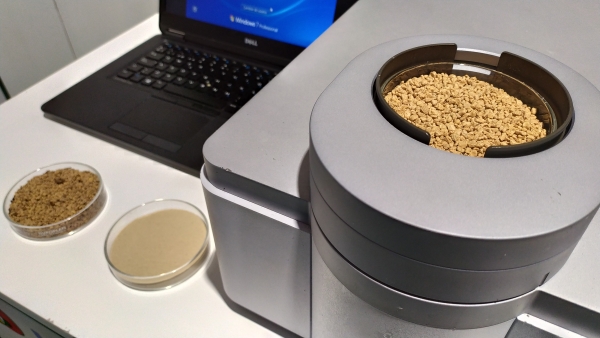Agricultural residue has other possible applications thanks to the Circular Economy, providing environmental benefits for the planet, and economic benefits for the agricultural community, which previously squandered them.
The biomass resulting from the cultivation of olive trees is converted, on many occasions, into energy. However, not all biomass has the same calorific value or the same quality for its transformation into energy. In fact, some biomass may contain harmful elements that render it unsuitable for this "second life". Hence, the BIOSAHE (Biofuels and Energy Saving Systems) research group at the University of Cordoba, led by Professor Pilar Dorado, has coordinated the Biomasstep project, with the aim of creating a tool that makes it possible to ascertain all these parameters in situ.
"The problem we find in the use of biomass lies in verifying its quality," explains Pilar Dorado. And the process to verify this quality involves very expensive chemical analyses, and can take a long time.
The research team has developed a rapid methodology to predict quality parameters using NIRS (Near Infrared Spectroscopy) technology, which, by emitting a beam of light that interacts with the biomass, makes it possible to analyse its composition. "Using a mathematical formula based on the wavelength of the light absorbed, we know whether or not there has been contamination of the biomass," says Professor Dorado. That is, thanks to this formula it is possible to determine, so to speak, the "DNA" of the biomass and confirm its usefulness.
Over the course of the project it was possible to demonstrate the success of the tool within the agricultural community, which found it highly useful. "Now it has been shown that it works. In fact, it is being used by several Andalusian cooperatives", explains the professor.
In addition, this instant analysis includes many more parameters, such as water and ash composition. "The amount of water is important when it comes to transport, because it reduces the usable energy, and ash is of interest because its presence can damage a boiler", adds Dorado.
Detailed knowledge of the biomass native to Spain and Portugal has been possible thanks to the hundreds of samples of olive pit, forest residues, and olive and eucalyptus tree debris, among others, that they have been able to analyse. Focused mainly on olive plantations and some almond trees, the utility of this tool has been certified for any grower who works with these types of crops. "The spectrum of samples is so broad that everyone can use it effectively," says the researcher.
Such has been its success that several cooperatives are already using it, and some companies that commercialize NIRS technology have requested this formula to offer their clients more complete service. They have also put companies in the sector in contact, creating a cooperation network to finance the system in case they want to buy it.
In addition, the great applicability it boasts in different fields related to biomass has been demonstrated. In fact, there are now many producers interested in having other types of samples analysed, such as fruit trees (orange, etc.), reaffirming these strong results.
The Biomasstep project - "Development and transfer to bioenergy companies of an innovative NIR (Near-InfraredSpectroscopy) technology for the rapid and economic analysis of the quality of indigenous biomass in the transboundary area." (POCTEP-0022_BIOMASSTEP_5_E) was funded by the European Union through the EP - INTERREG VA Spain Portugal (POCTEP) -1 call.
"This report is part of the project “CONSOLIDA-UCO ECT2020-000810", funded by MCIN/AEI/10.13039/501100011033 and by European Union “NextGenerationEU”/PRTR”.


